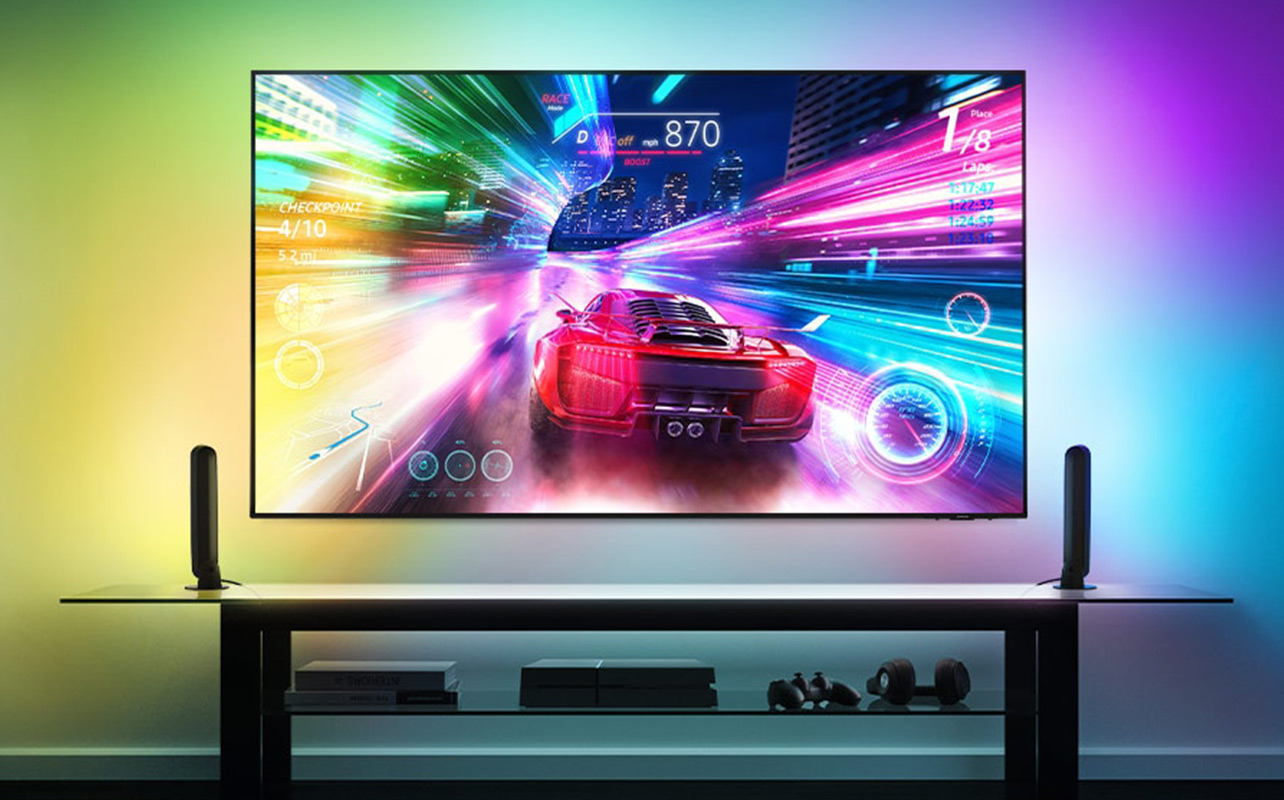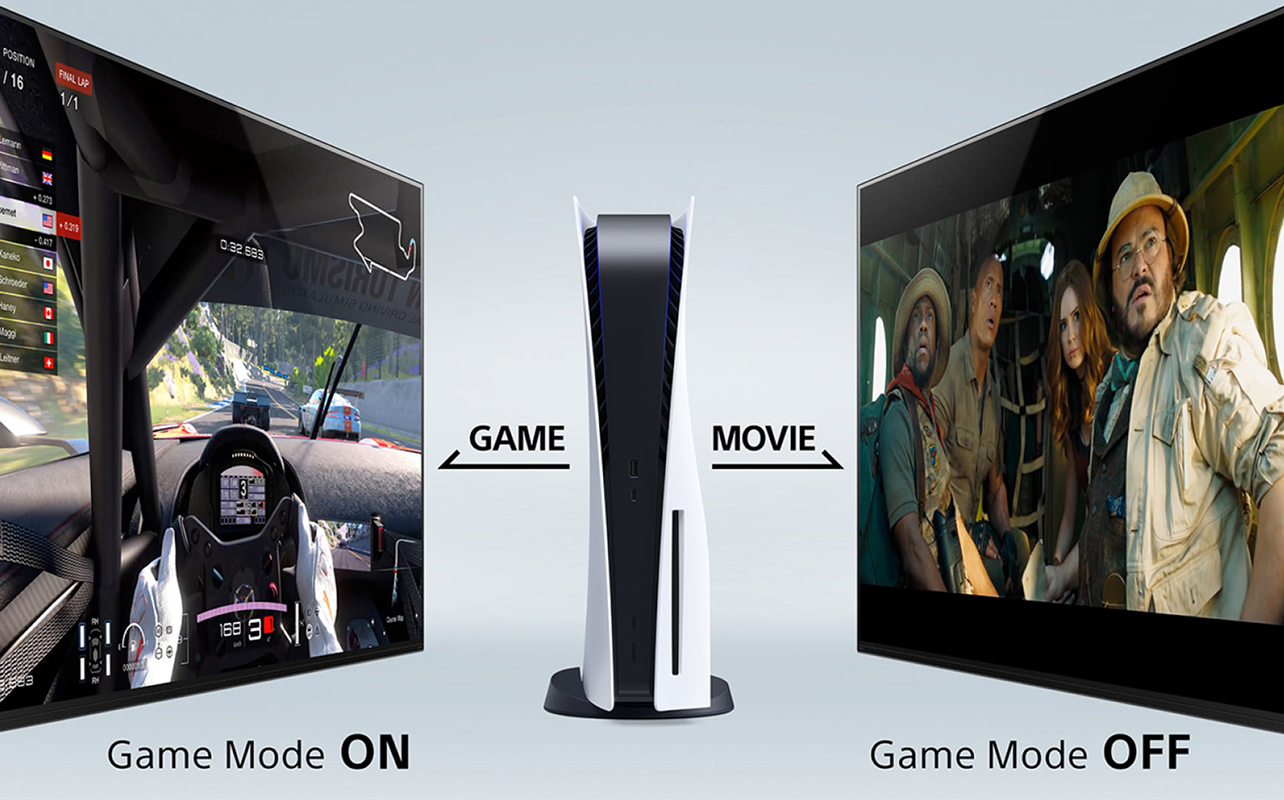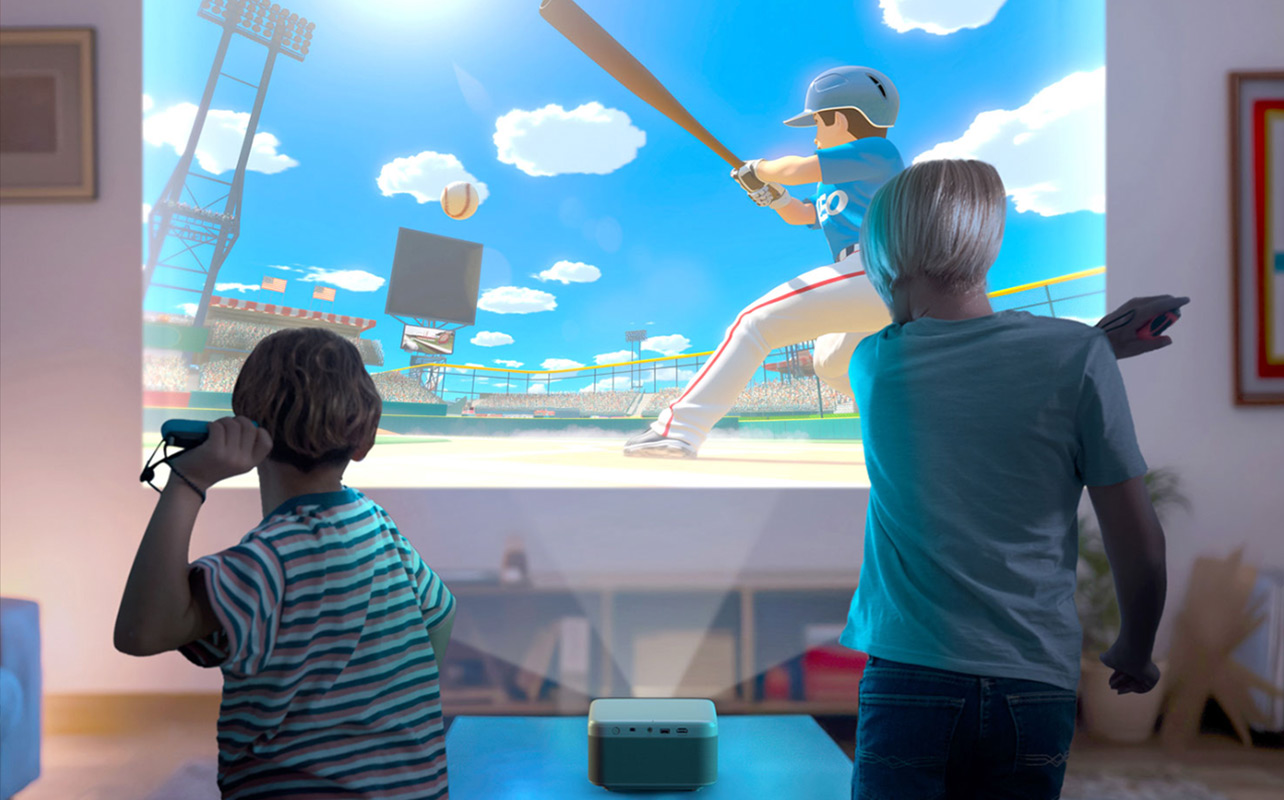
If you’ve shopped for a TV, computer monitor, or projector, you may have noticed one of the specs or features listed is refresh rate. Refresh rate refers to how the display handles motion or action. Depending on what you’re using your display for, it can be a very important feature. Here’s a look at what refresh rate is, how it works on TVs, monitors, and projectors, and how to choose a display with the right refresh rate for you.
Table of contents
- What is refresh rate?
- Factors that impact motion
- TV refresh rate
- Monitor refresh rate
- Projector refresh rate
- When does refresh rate matter most?
What is refresh rate?
If you’ve ever watched an old home movie on an 8mm projector, you know the film that feeds through the machine is made up of individual still images. As the film rolls through the projector at a set speed, it appears as though the still images are in motion.
8mm movie projectors can roll at a rate of 14 frames per second (fps). While that’s so slow any motion will appear jumpy or choppy, it’s a good way to illustrate how refresh rates work. The video or game you’re watching or playing on your TV is made up of a bunch of still images too, but they are shown so rapidly you’ll see them as seamless motion.
Refresh rate is the number of times per second a TV, projector, or monitor can reset and display an image. It’s measured in Hz, and a standard refresh rate for 4K TVs is 60Hz—meaning the image is refreshed sixty times every second. You can also choose a display with 120Hz and 240Hz. A display with 120Hz refresh rate can produce 120 fps, and a 240Hz TV can refresh at a rate of 240Hz. A TV with a higher rate offers a smoother watching experience because it can display more frames per second than a TV with a lower refresh rate.
What affects refresh rate?

I didn’t realize just how important refresh rate was until my kids bought a PS5. The difference between gaming on our TV with 60Hz refresh rate and a computer monitor with 240Hz was visibly noticeable. Thankfully for my kids, it wasn’t hard to convince mom it was time to upgrade the TV from a model with 60Hz to a model with 120Hz. Given how much we love our PS5, I’m glad we did.
1. The source of video matters for smooth motion
60 images per second seems pretty fast, and for most videos, it is. Just keep in mind that the refresh rate of a TV, computer monitor, or projector is just as much about the source of video as how it can perform.
Take our 8mm movie projector as an example. Since the beginning of film, movies have been shot at a rate of 24fps. Most cable TV shows play at a rate of 30fps. For this type of content a rate of 60Hz should be fine because your TV can replicate images at double the frame rate the film was shot in. But what if you’re watching a movie or TV show with a lot of action? The content within the frame has sped up, and to display it properly your TV has to speed it up too.
If your TV can’t refresh the image fast enough to keep up with action, scenes might look like they are blurring or dragging across the screen. That’s called motion blur. An example of motion blur is when you’re watching hockey and you see the puck blurring across the screen or you’re watching a car chase and you see the lights of a speeding car slow down and blur within the scene. To avoid it, your TV uses technology to increase speed in those scenes. The goal is to have your picture quality stay consistent no matter what you’re watching.
2. Response time and refresh rate

Response time is also important for how your display handles motion. Response time is the length of time it takes for the display’s pixels to change colour. Both refresh rate and response time will determine if the motion produced looks smooth and seamless or if it’s choppy and blurry. Lower is better when it comes to response time. When your TV, projector, or monitor has a low response time it will have better motion handling capacity than a display with a higher response time. Just as an example, the average response time of some of the latest 4K TVs with 120Hz refresh rate is 2 to 10 ms. That’s very low, but you’ll also find some 4K TVs with a high response time of 50 ms.
3. Don’t forget about input lag
There’s another factor that can affect your TV’s motion handling: input lag. Input lag is the delay between when you tap your controller or keyboard and when your display responds. Input lag comes into play when gaming on TVs and monitors. The faster your display’s refresh rate, the lower your input lag will be because the image is updated faster and you can respond to the new image faster.
Different devices have different refresh rates
TVs, computer monitors, and projectors usually have different refresh rates. Let’s take a look at each type.
1. Refresh rates on TVs
The latest TVs have the technology to increase refresh rate so it matches the action on screen. This is why you’ll see the terms ‘native refresh rate’ and ‘effective refresh rate’.
Native refresh rate vs. effective refresh rate
Depending on the brand, there are different types of technology to enhance refresh rate and motion handling. Native refresh rate is the rate the TV can produce on its own, and it’s either 60Hz or 120Hz. Effective refresh rate is what the TV can produce using the brand’s motion handling technology, and you’ll see a TV’s effective rate listed as 240Hz up to 480Hz. Sony has XR Motion Clarity or Motionflow XR technology. LG has TruMotion, and Samsung has MotionRate. The names are different from brand to brand, but the tech behind the speed is the same.
Some brands also use TV technology to reduce the appearance of motion artifacts. Motion artifacts are a distortion in the video feed that can happen in action scenes or during gaming. BFI (black frame rate), for example, is a process that involves inserting black motion frames between the original frames. Frame interpolation or the ‘Soap Opera Effect’, on the other hand, involves inserting fake frames that are copies of the previous and next frames in the video. Keep in mind that all of this happens too fast for the naked eye to process, so while you’ll enjoy faster action sequences with no motion blur, you’ll likely never see it happen. You can also choose to turn off any motion enhancement technology if you don’t want your TV to use it.
VRR and gaming TVs

Every TV has two or more HDMI ports, and the latest TVs also offer HDMI 2.1 support for gaming consoles. A TV with HDMI 2.1 should support 4K gaming at 120Hz, and it may also support VRR or variable refresh rate. The PS5 and Xbox Series S and X when you have your console plugged into an HDMI 2.1 input.
Variable refresh rate means your TV can automatically adjust or speed up its refresh to match the frame rate from your gaming console or your computer. VRR is important for gaming because games don’t always stick to a standard frame rate. The frame rate for gaming is also dependent on your console or, if you’re hooked up to your computer, the graphics card, so the number of frames produced can change from second to second. If your TV can only refresh a standard frame rate while your console is demanding more, you could see screen tearing or fragmentation during your game.
VRR is just one of the reasons why gaming TVs offer game mode. Game mode adjusts the settings of the TV to maximize the content coming in from your console. Some TVs will auto-adjust based on the console you’re gaming on, while others have a game mode you can turn on yourself. Depending on which brand of TV you have your game mode will turn on VRR, reduce image processing to speed up frame rate, and optimize your input lag for maximum responsiveness.
2. Refresh rate on computer monitors
If you’re choosing a new display for gaming and you’re wondering if you should choose between a computer monitor or TV, you’ll find quite a few differences between the two. Take a look at this article on smart monitors vs smart TVs for more information on both. In terms of refresh rate differences, you’ll find computer monitors are able to produce a faster refresh than a TV.
A computer monitor’s performance is dependent on the PC or console it’s connected to and the graphic engine the PC or console has, so the listed refresh rate on a monitor is the maximum refresh achievable with the optimal hardware connected to it. The average monitor will have a refresh rate of 120Hz, but there are also monitors with 144Hz and up. Gaming monitors can produce a rate of up to 390Hz right now and may increase up to 540Hz in the near future. With a rate this fast, your monitor will be able to produce blistering fast gameplay for your PC and the latest consoles.
Computer monitors can also support technology to speed up gameplay and improve refresh rate. Some offer VRR while others have adaptive-sync technology. If you have a graphics card that supports adaptive sync like G-Sync or FreeSync, your graphics card will auto-adapt to whatever you’re playing and remove potential screen issues like tearing or blur.
3. Refresh rate on projectors

One of the best parts of having a projector is that you’re able to enjoy movies, TV shows, and gaming on the biggest screen size possible. Projectors have also evolved to match the rate on the latest TVs and computer monitors. Older projectors had a refresh of 30Hz, but the standard projector refresh rate now is 60Hz. You’ll also find the latest gaming projectors can produce up to 120Hz.
A projector’s refresh rate is dependent on built-in technology, what the projector is connected to, and if you’re gaming, input lag. With the newest gaming consoles and graphics cards supporting 4K 120Hz gaming, some projectors can also offer that via an HDMI 2.1 port. There are also gaming projectors that have 4K 60Hz or 1080p at 120Hz. Lag times are low for the latest projectors, with some offering 16ms input lag while gaming at 4K 60Hz too.
When does refresh rate matter most?
Refresh rates matter most when you’re watching fast paced action movies, sports, or playing intense games. For most users, a TV, projector, or monitor that can produce 60Hz or 120Hz refresh rate is more than enough. For anyone who watches a lot of action or is a gamer, 120Hz is the minimum you should choose. As rates increase, the price point of the display will increase too, so your budget will also be a consideration.
Take a look at the different TVs, monitors, and projectors available at Best Buy right now and choose the best refresh rate for you.






film student and freelance videographer/cinematographer. Films are mostly and have mostly been shot in 23.96. 🙂 other frame rates are often used for tv.
Comments are closed.